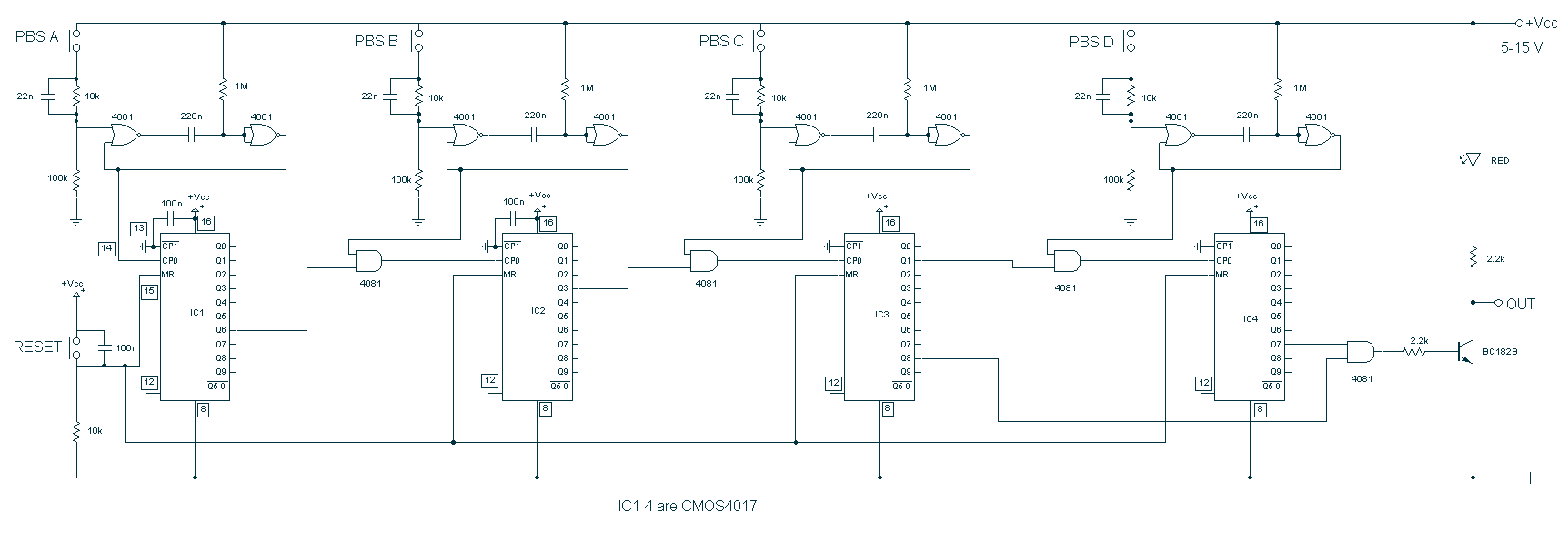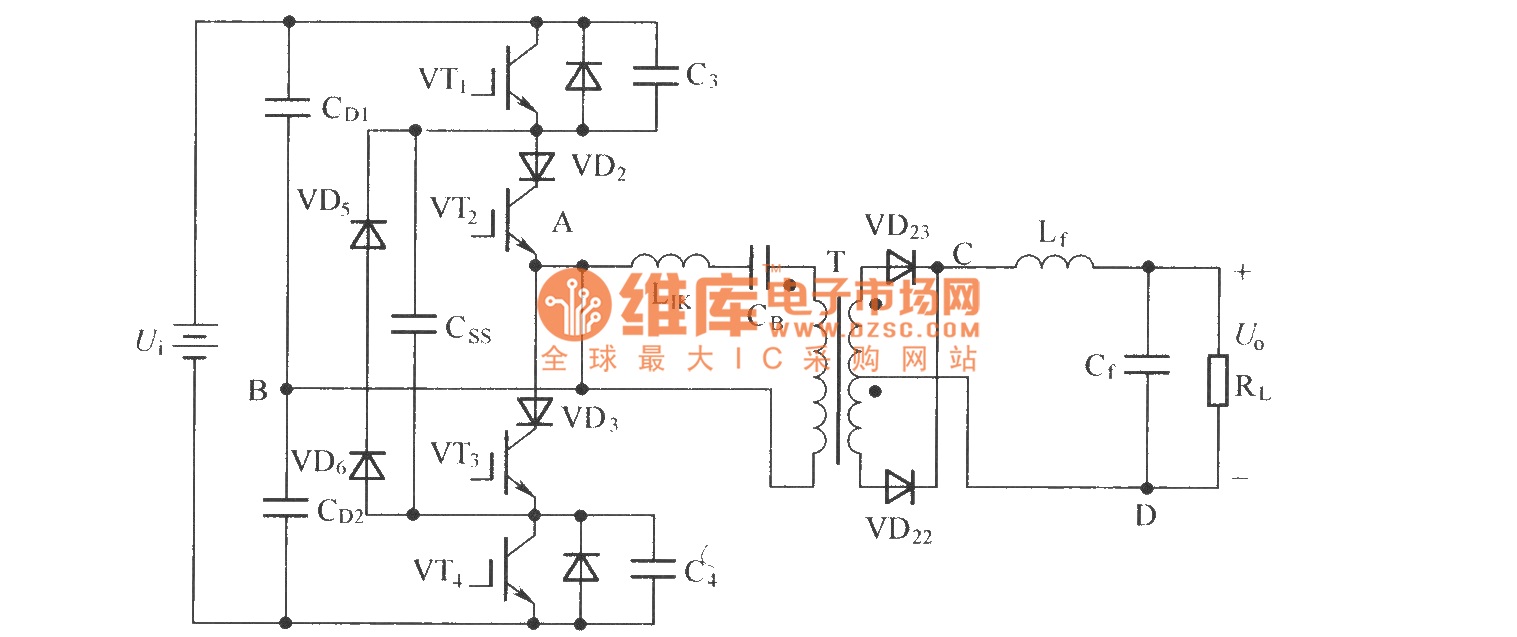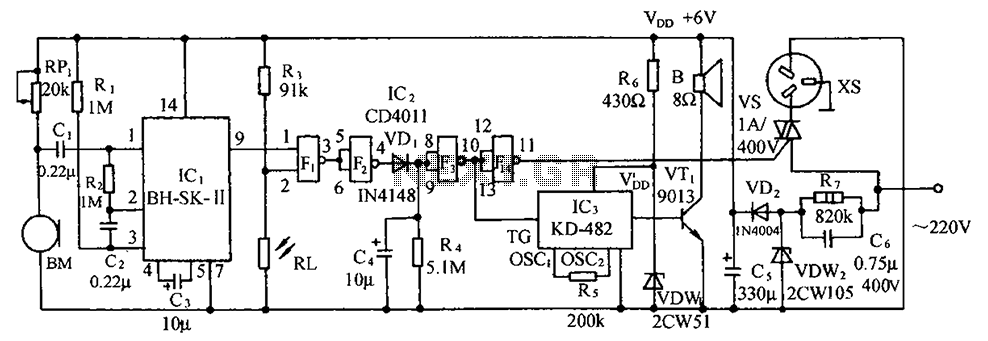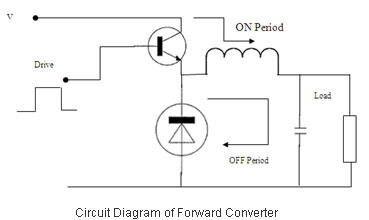
Switch Debouncing

This circuit will remove the transient spikes and contact bounces from a non-latching push button switch. Using a 555 timer as a monostable circuit, it is easy to build a good switch debouncer circuit. There are many circuits for SPDT debouncing, but not many for a normally open, push-to-make press button switch (PBS). The 555 monostable gives an output pulse of around 20 msec with component values shown. More: The 555 circuit can be re-triggered if the input is held low longer than the output pulse. To prevent this happening, I have included a further timing circuit comprised of the 1Meg resistor and 47n capacitor. Normally, the 47n capacitor is discharged via
The described circuit employs a 555 timer in a monostable configuration to effectively debounce a normally open push button switch (PBS). The primary function of this circuit is to eliminate unwanted transient spikes and contact bounce that may occur when the switch is pressed or released. In this setup, the 555 timer generates a single output pulse of approximately 20 milliseconds whenever the push button is activated.
The circuit's design includes a timing component that ensures the output pulse duration can be adjusted by changing the resistor and capacitor values connected to the 555 timer. The output pulse duration is crucial for ensuring that any mechanical bouncing of the switch contacts does not result in multiple unwanted pulses being registered in the connected circuitry.
To further enhance the reliability of the debouncing mechanism, a secondary timing circuit is integrated, consisting of a 1 Megohm resistor and a 47 nanofarad capacitor. This additional timing circuit serves to prevent the 555 timer from being retriggered while the input remains low longer than the output pulse. When the push button is pressed, the capacitor charges through the resistor, and this RC time constant helps to ensure that the timer output remains stable and is not inadvertently retriggered by continued contact bounce.
In summary, this circuit configuration provides a robust solution for debouncing a push button switch, making it highly suitable for applications where precise switch activation is critical. The use of the 555 timer in monostable mode, combined with the additional timing elements, ensures that the output remains clean and free from noise, thereby improving the overall performance and reliability of the electronic system in which it is implemented.This circuit will remove the transient spikes and contact bounces from a non-latching push button switch. Using a 555 timer as a monostable circuit, it is easy to build a good switch debouncer circuit. There are many circuits for SPDT debouncing, but not many for a normally open, push-to-make press button switch (PBS).
The 555 monostable gives an output pulse of around 20 msec with component values shown. The 555 circuit can be re-triggered if the input is held low longer than the output pulse. To prevent this happening, I have included a further timing circuit comprised of the 1Meg resistor and 47n capacitor. Normally, the 47n capacitor is discharged via 🔗 External reference
The described circuit employs a 555 timer in a monostable configuration to effectively debounce a normally open push button switch (PBS). The primary function of this circuit is to eliminate unwanted transient spikes and contact bounce that may occur when the switch is pressed or released. In this setup, the 555 timer generates a single output pulse of approximately 20 milliseconds whenever the push button is activated.
The circuit's design includes a timing component that ensures the output pulse duration can be adjusted by changing the resistor and capacitor values connected to the 555 timer. The output pulse duration is crucial for ensuring that any mechanical bouncing of the switch contacts does not result in multiple unwanted pulses being registered in the connected circuitry.
To further enhance the reliability of the debouncing mechanism, a secondary timing circuit is integrated, consisting of a 1 Megohm resistor and a 47 nanofarad capacitor. This additional timing circuit serves to prevent the 555 timer from being retriggered while the input remains low longer than the output pulse. When the push button is pressed, the capacitor charges through the resistor, and this RC time constant helps to ensure that the timer output remains stable and is not inadvertently retriggered by continued contact bounce.
In summary, this circuit configuration provides a robust solution for debouncing a push button switch, making it highly suitable for applications where precise switch activation is critical. The use of the 555 timer in monostable mode, combined with the additional timing elements, ensures that the output remains clean and free from noise, thereby improving the overall performance and reliability of the electronic system in which it is implemented.This circuit will remove the transient spikes and contact bounces from a non-latching push button switch. Using a 555 timer as a monostable circuit, it is easy to build a good switch debouncer circuit. There are many circuits for SPDT debouncing, but not many for a normally open, push-to-make press button switch (PBS).
The 555 monostable gives an output pulse of around 20 msec with component values shown. The 555 circuit can be re-triggered if the input is held low longer than the output pulse. To prevent this happening, I have included a further timing circuit comprised of the 1Meg resistor and 47n capacitor. Normally, the 47n capacitor is discharged via 🔗 External reference





